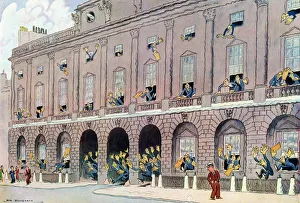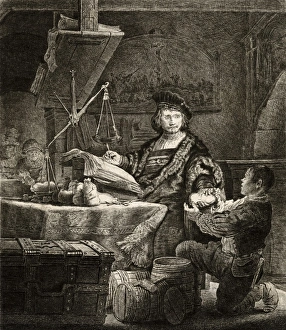Taxman Collection
"The Taxman: A Historical Perspective on the Burden of Taxes" In this captivating collection of artworks and illustrations
All Professionally Made to Order for Quick Shipping
"The Taxman: A Historical Perspective on the Burden of Taxes" In this captivating collection of artworks and illustrations, we delve into the intriguing world of the taxman throughout history. From humorous cartoons to dramatic paintings, these visual representations shed light on the complex relationship between individuals and their tax obligations. We begin with HM Bateman's comical depiction titled "Someone Drops a Sixpence Near Somerset House, " where a passerby accidentally drops money near a government building, symbolizing how taxes can unexpectedly affect our lives. Moving forward in time, Francois Godefroy's painting "The Assault on John Malcolm" transports us to Boston in 1774 during a pivotal moment in American history when colonists rebelled against unjust taxation. Continuing our journey through artistry, we encounter satirical cartoons such as "The Liliput Levy on John Bull Gulliver, " which humorously portrays the burden that taxes impose upon ordinary citizens. In contrast, "Prosperous John. (high prices)" highlights how high taxation can lead to inflated costs for essential goods and services. H. M. Bateman returns with his mesmerizing artwork titled "Mesmerism: Rabbit vs. Stoat, " metaphorically representing taxpayers' struggle against relentless financial demands from authorities. Meanwhile, Marinus van Reymerswaele's masterpiece "Two Tax Gatherers" takes us back to the 16th century and reminds us that collecting taxes has been an age-old practice fraught with tension. Religious undertones emerge as we explore Caravaggio's iconic painting "The Conversion of St. Matthew. " Here, we witness one man's transformation from tax collector to follower of Christ—a powerful reminder that even those associated with unpopular roles can find redemption. Shifting gears towards more contemporary times, we observe society's discontentment captured in Gustave Caillebotte's poignant piece titled "Mean Collection. " This oil painting reflects public sentiment regarding excessive taxation and its impact on the common man.











